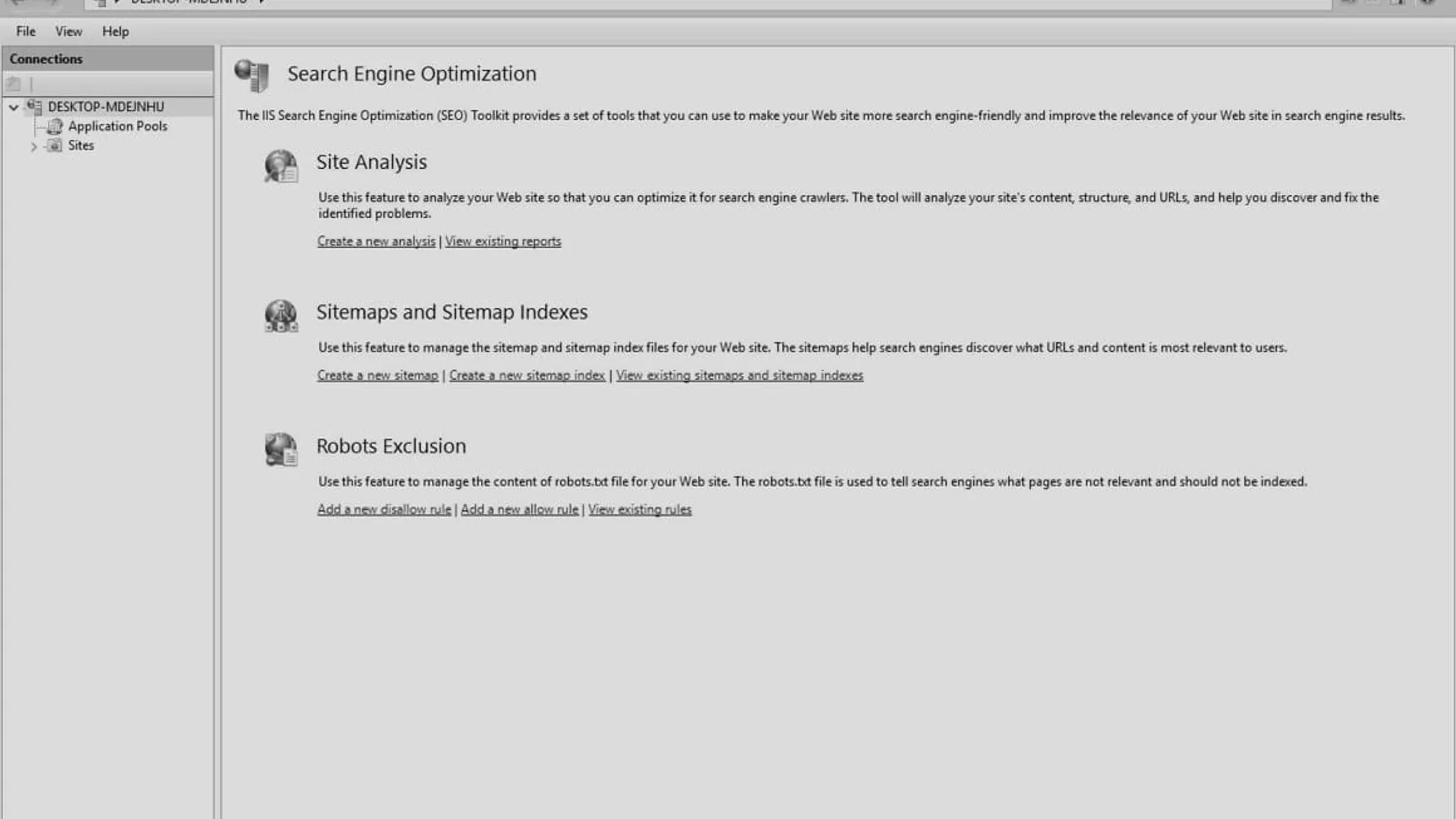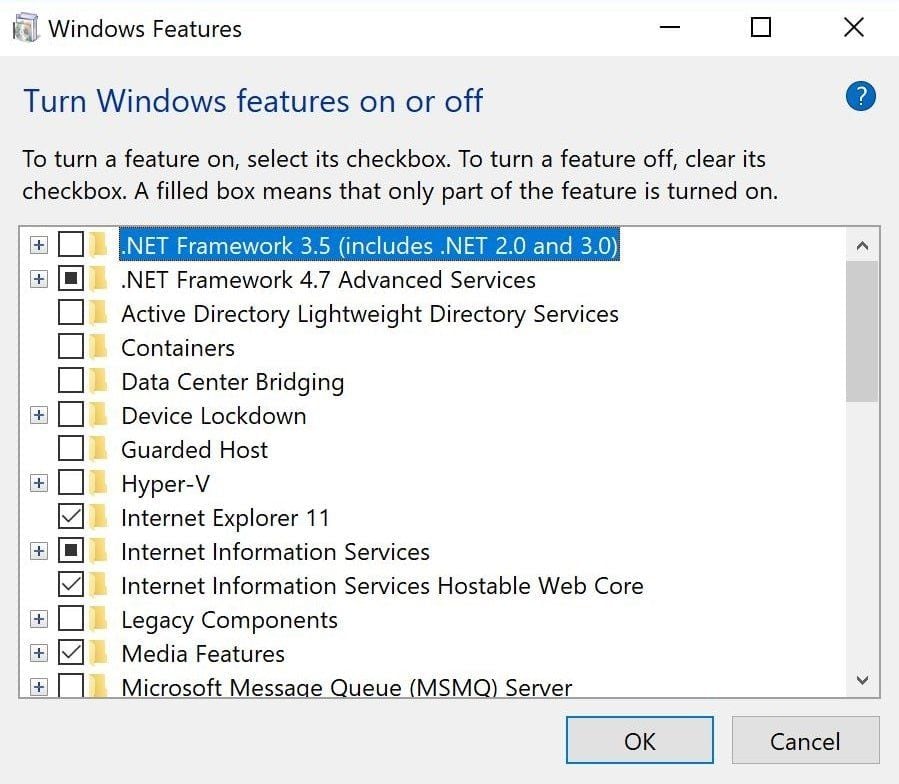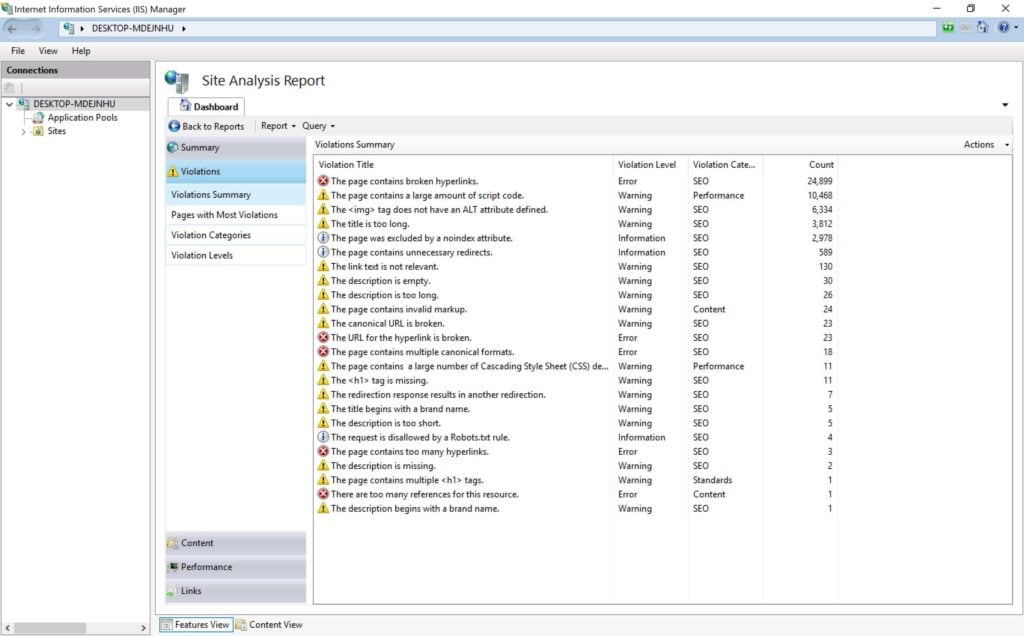
How and why to install IIS SEO Toolkit on Windows 10

Try installing the Search Engine Optimization Toolkit after downloading from the official Microsoft IIS site and you’re likely to be told that you need IIS version 7.0 or greater to run setup. But not many machines still support IIS version 7.0 so you won’t be able to install that either. Before you start downloading Web Platform Installers you’ll need to:

- Go to Programs in your Control Panel and click Turn Windows features on or off
- Make sure the box for Internet Information Services is ticked
- Open Regedit.exe (just type it into your search bar)
- Expand HKEY_LOCAL_MACHINE, then SOFTWARE, then Microsoft, then InetStp
- Open Major Version Attribute
- Click decimal
- You’re probably seeing a number 10 – the first digit is assumed to be the version, 7 is greater than 1, so you’re told your version is inadequate – change the 10 to a 7
- Run the IIS SEO Toolkit installer and follow the steps WHICH NOW WORK
- Open Major Version Attribute and change the 7 back to 10
- CRAWL ALL THE THINGS
You probably need administrator privileges to install the tool at all but modifying your Regedit.exe will definitely require the billpayer’s permission sadly.

Assuming you can get it running, here’re 3 reasons why you want the IIS Search Engine Optimization Toolkit in your arsenal:
- It’s free! IIS SEO Toolkit probably isn’t going to be your first-choice crawler but makes comparing multiple data sets possible for marketers with small software budgets. Even so, we crawl websites with Screaming Frog SEO Spider, SISTRIX and DeepCrawl – IIS still adds value
- It likes to show very large numbers in the violations report, which is useful because it’s quickly very obvious where sitewide links are broken
- It does most of the things you’d expect from a crawler in a very simple way: it takes one click to see all of your oversized images, or pages with broken links, or crawl depth…
The crawler does have its limitations though:
- IIS SEO Toolkit, like IIS in general, has absolutely no idea how to deal with capital letters. If your site has that problem (try changing the case of letters in a URL – does it redirect? If not, is there a canonical tag? THERE SHOULD BE) you’ll need Screaming Frog, DeepCrawl or similar to let you know
- It eats memory – make sure you delete your old crawls and you might struggle to crawl enormous sites “out of the box”
- It doesn’t integrate with Google Analytics, Search Console or basically anything else at all – no JavaScript rendering, no log file analysis
- It obviously only works on Windows machines
Ultimately, it shouldn’t replace your main crawler but for a free tool it absolutely is worthwhile. If you’re looking for a step-by-step guide on how to run a crawl, check out ScottGu’s blog on weblogs.asp.net here.















